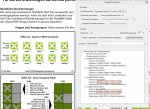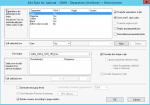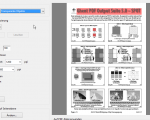Dear All,
in the moment verifying our prepress workflow. Amongst others the overprinting behaviour. When using one of the common testforms (e.g. from Ghent group) and simply converting the green spotcolor to CMYK (via alternative color definition) the now CMYK-CMYK overprint (overprint=yes, OPM=1) leads to a knockout, which, given the actual channel values, is perfectly right (see first picture). When ripping the original file (with spot color still present) and omitting any separate spot color plate, thus converting by the RIP in the same way, there is still overprinting (see second picture, constructed from the TIFF/G4 files). Am I missing something or is this supposed to happen - although it internally is converted to CMYK?
in the moment verifying our prepress workflow. Amongst others the overprinting behaviour. When using one of the common testforms (e.g. from Ghent group) and simply converting the green spotcolor to CMYK (via alternative color definition) the now CMYK-CMYK overprint (overprint=yes, OPM=1) leads to a knockout, which, given the actual channel values, is perfectly right (see first picture). When ripping the original file (with spot color still present) and omitting any separate spot color plate, thus converting by the RIP in the same way, there is still overprinting (see second picture, constructed from the TIFF/G4 files). Am I missing something or is this supposed to happen - although it internally is converted to CMYK?
Attachments
Last edited:





















